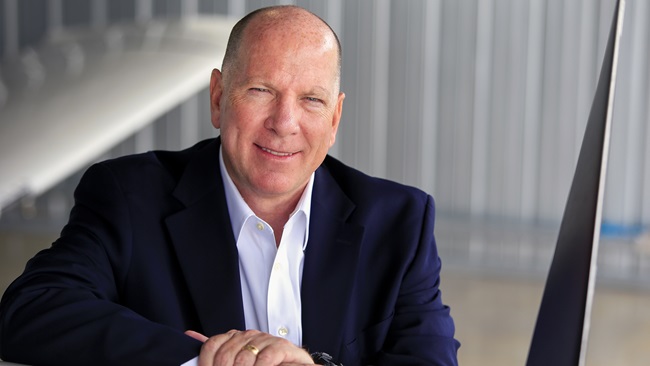Training Tips |
Stop or swap?
A call comes in. It's your instructor calling to say that that your trusty high-wing, two-seat trainer is being looked over by the house mechanic after someone over-rotated the aircraft during landing, resulting in a tail strike. (Yes, although many student pilots must be encouraged to flare sufficiently for touchdown, excessive rotation can be a problem too.) Rather than scrap tomorrow's lesson on a day forecast to be perfect for ground reference maneuvers and traffic pattern work, your CFI proposes continuing in another aircraft. This one is also a two-seater—and powered by the same engine as your usual craft—but it is a low-wing aircraft, with a T-tail. "This will be a good experience for you," the CFI says. Heading out to the field early to study the pilot's operating handbook will maximize the value of your session. You may have read that you can expect some important differences in flight characteristics based simply on the aircraft’s T-tailed design—differences that will be noticeable right from the start of your flight. For example, "On takeoffs and landings the elevator will not be as effective as that on an aircraft with a conventional tail because it is above the propeller's slipstream," wrote AOPA Foundation President Bruce Landsberg in this review of the Piper PA-38 Tomahawk. "Pilots who have learned to fly T-tailed aircraft understand this characteristic and learn to anticipate its effects." The same effects will be noticeable during practice of maneuvers at low airspeed. You don't have to switch from one aircraft manufacturer's products to another's to encounter important differences. Just switching from one model year to another can mean a change in an aircraft's engine horsepower, flap-switch design—even the amount of flap travel available. Cockpit instruments may appear in unaccustomed layouts, or there may be an unfamiliar instrument in place of a familiar gauge. Keep flying! Once back in your regular trainer, you will likely conclude that any initial disappointment you felt about its temporary unavailability has become new appreciation for its aerodynamic "personality." Training ProductsJeppesen offers instrument test guideJeppesen has made available the Instrument Airmen Knowledge Test Guide, created to prepare for and achieve higher FAA knowledge test scores. It follows the Jeppesen textbooks by chapter, allowing students to learn faster with a greater understanding of each area of study. The guide includes full-color charts, a unique sliding mask for self-study, all FAA airplane test questions, FAA computer test information, and current information on airspace reclassification. Gleim offers online communications courseThe Gleim Online Communication Course is an interactive ground training course designed to increase pilots' safety, knowledge, and abilities in the area of aviation radio communications. From small, nontowered airports to the largest Class B airspace areas, six Online Communication Course study units give students practical knowledge that allows them not only to participate in radio communications, but also to excel in them. The cost is $29.95. Note: Products listed have not been evaluated by ePilot editors unless otherwise noted. AOPA assumes no responsibility for products or services listed or for claims or actions by manufacturers or vendors. Final ExamQuestionA terminal aerodrome forecast (TAF) is a textual weather product that can be used by pilots for flight planning. How large of an area does a TAF cover and how long is it valid? AnswerA TAF covers an area within a 5-statute-mile radius of the airport. Each TAF is valid for either 24 or 30 hours. Got a question for our technical services staff? Contact AOPA. |
 A student pilot discussing how flight training is progressing is likely to bring up two big topics: the budding relationship with the training aircraft, and the emerging rapport with the flight instructor. Confidence flows from positive developments on both fronts—but in either, a disruption isn't necessarily a setback. You can even turn it into a positive.
A student pilot discussing how flight training is progressing is likely to bring up two big topics: the budding relationship with the training aircraft, and the emerging rapport with the flight instructor. Confidence flows from positive developments on both fronts—but in either, a disruption isn't necessarily a setback. You can even turn it into a positive.

